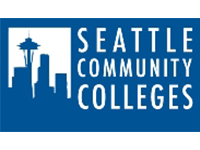Telling young people they need a 4-year degree is a ‘disservice’
 •
•
Mandi Woodruff
It’s true that some vocational (or trade) schools are more concerned with turning a profit than providing the kind of training that can actually lead to, say, an actual vocation. Bogus schools called “diploma mills” sell fake degrees and certificates to unwitting buyers. Others lure in new students with empty job placement guarantees and offer course credits that, lo’ and behold, turn out to be worthless once a student tries to transfer to another school.
But a few bad actors doesn’t mean the entire industry is a sham. By the year 2020, it’s estimated that nearly two-thirds of all jobs will require at least some form of post-secondary education.
Not only that, trade and vocational schools are more of an economic necessity than ever as middle-skill jobs — defined as jobs that require a high school diploma and some training or college, but not a four-year college degree — are in high demand. JP Morgan Chase published a report last month about the skills gap in the American workforce and found high demand for middle-skill talent in big cities like Chicago, Detroit and Dallas. In Houston, for instance, the report found that middle-skill occupations represent the largest sector of the economy with a projection of nearly 19,000 openings every year in the petrochemical and commercial and industrial construction sectors for the next few years.
At the same time, college costs have been soaring at an alarming rate, driving more and more students to take on crushing amounts of debt to cover their expenses. For young adults who may not otherwise have the resources (time or money or both) to pursue a full-fledged four-year degree, trade schools can be an invaluable alternative.
“We think that we’ve done a disservice by focusing on a four-year degree as the only pathway to success,” says Melanie Anderson, director of government affairs for Opportunity Nation, a nonprofit that supports economic mobility. “Young adults can look at two-year community colleges. They can look at trade schools and other options to make sure that they find a career.”
Tales about the booming welding industry led Bobby Stephens, 21, to enroll in a welding program at a community college near his home in Chicago. The fact that tuition was just $1,200 per semester didn’t hurt either (one semester at an average four-year college would cost three times as much). Stephens was able to cover his tuition with part-time jobs, including a stint working for an instructor as a student aide. It took him four semesters to complete his program, by which time he had incurred zero student loan debt and had secured a job earning $17.50 an hour (with retirement and health benefits) at a nearby machining company.
“I’m not like your typical 21-year-old just out of college,” he says. “I’ve never had a roommate. I don’t have debt. It’s a good feeling.”
Trade schools are fairly widespread in the U.S., but there has been growing interest in the potential of apprenticeship programs to provide another pathway to affordable higher education. Apprenticeships, offered by businesses or schools working closely with business owners, give students on-the-job training rather than traditional classroom instruction. Students earn professional certificates upon completing their apprenticeship. Congress is considering a bipartisan bill that would provide tax credits to businesses that offer apprenticeship programs in the U.S.
“Apprenticeships are a fantastic path forward and another option for young adults,” Anderson says. “Employers are the ones that know best what types of skills that they need their possible employees to have.”
Edgard Sanchez, 44, had more than two decades of military service under his belt when he decided to switch career paths in 2013. He moved to Atlanta and started bouncing around the idea of starting a food truck with a close friend. Without professional cooking experience, Sanchez decided to enroll in a nine-month culinary apprenticeship program offered by a local university. Sanchez spent 15 hours a week working at a rotating list of restaurants. Tuition was $9,995, a fraction of what some culinary schools charge these days.
“I don’t have any regrets about not going to [a traditional college],” says Sanchez, who opened his food truck, C’est Tout Bon To Eat, last November. “I follow some of my friends and see what they did after high school and I am doing a lot better than some of them. I would definitely do everything that I did again.”
7 questions to ask when vetting a trade school program
Brian Shull, an attorney in the Federal Trade Commission’s bureau of consumer affairs, says regulators can only do so much to prevent fraud in the education industry. Students have an important role to play as well.
“Education nowadays is big business — it’s billions of dollars floating around,” says Shull. “Students should approach it the same way they do any major purchase like a house. That means doing your homework and asking questions.”
Here are 7 questions you should ask before investing in a vocational school program:
Is it accredited? Check to see whether the school has been accredited by one of the 15 regional or national accrediting bodies approved by the Department of Education.
Is it licensed by the state? Most states require specific programs at career colleges and technical schools to be licensed by the proper licensing board. For example, a school’s home inspection program would need to be evaluated by the state’s home inspection licensing board. If a program isn’t properly licensed by the appropriate state board, their graduates will have a hard time finding work in their field. Ask the school which state agency handles its licensing. Then call them or visit their website to make sure the school’s license or certificates are up to date.
Does it sound too good to be true? Be skeptical of any school that advertises degrees or certificates that require no actual work on your part. Likewise, don’t trust any institution that tells you they will 100% guarantee you a job after graduation. Do, however, ask the school to share its most recent job placement and graduation rates and compare them to other schools. And if they balk at your questions, take that as your cue to leave.
Is it affordable? Some vocational schools can cost even more than traditional four-year institutions, so watch out for programs that are cost prohibitive. If you have to take out student loans to cover tuition, be sure you’re not biting off more than you can chew. The student loan default rates at for-profit institutions is 22%, compared to 13% at public institutions.
Does the school have a history of complaints? Check with your state’s Attorney General’s office, the FTC or the Better Business Bureau to see whether any complaints have been filed against the school.
Will this certificate/degree give me an edge? Ask professionals in the field you’re studying what certificates and training they needed to find a job. Not all trade school programs are created equally, and you may find that the certificate you earned doesn’t meet professional standards in your field.
Are they on “the list”? Lastly, check to see whether the school is on the list of institutions currently being reviewed the Department of Education. Being on this list doesn’t automatically mean that the schools are scamming students, but it’s a clue that it could be under investigation for accreditation issues, missing financial statements, or administrative concerns. The most recent list available is current as of March 1, 2015.








